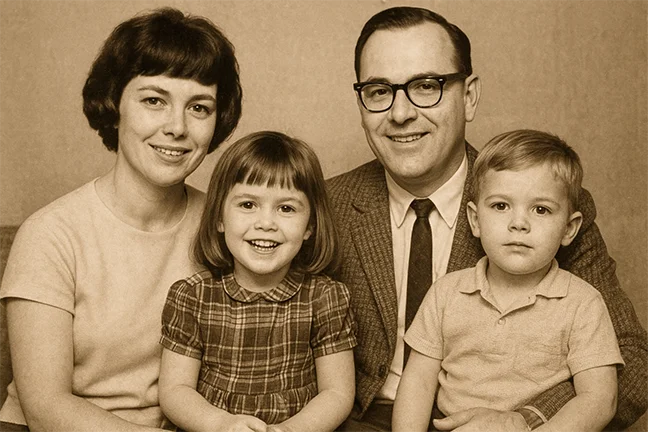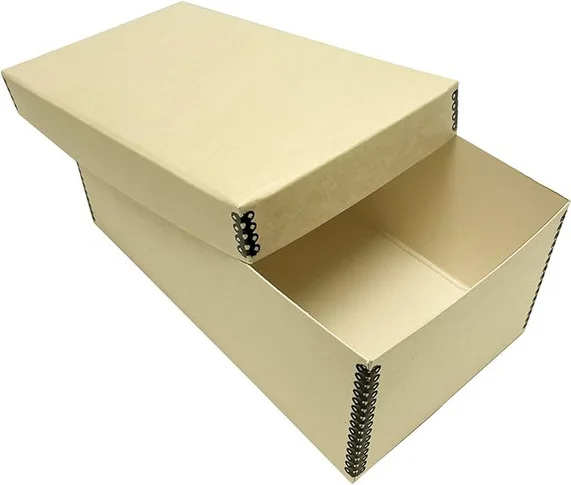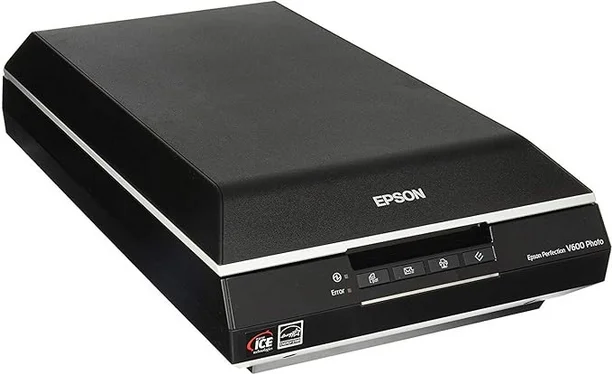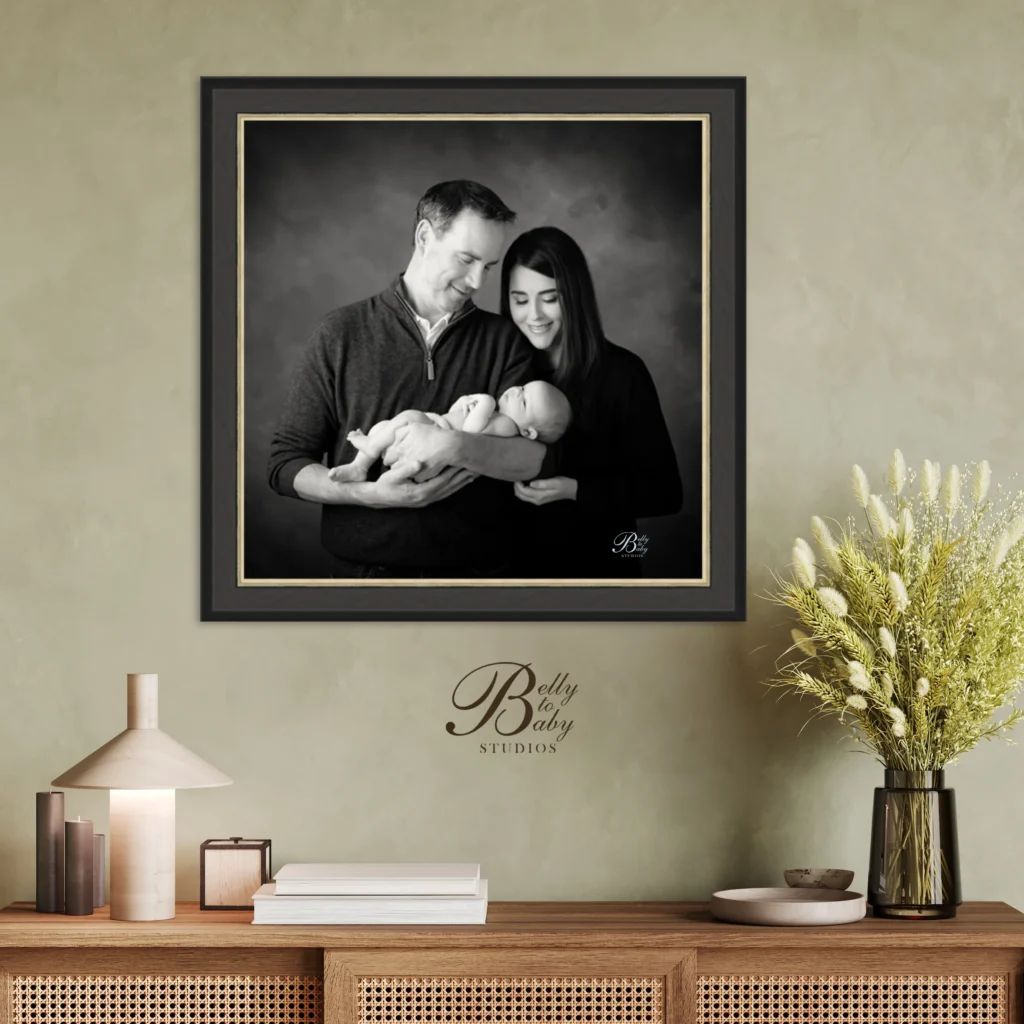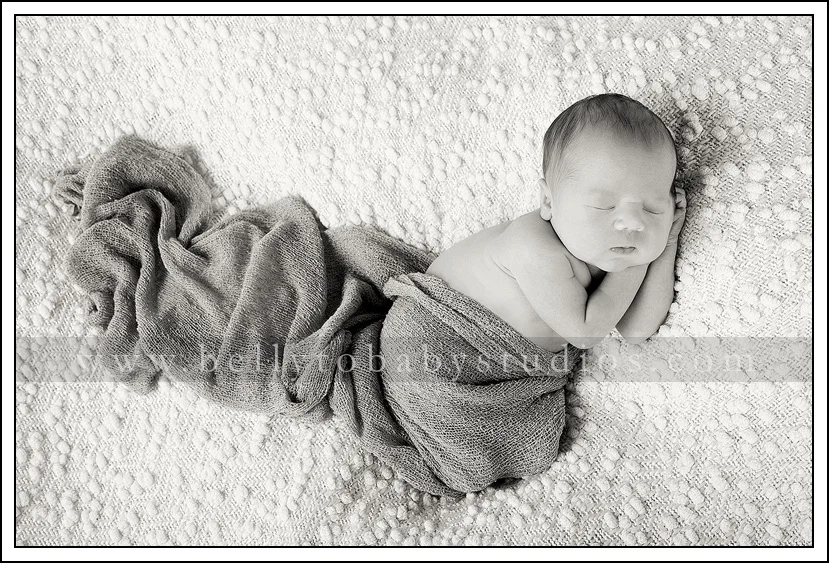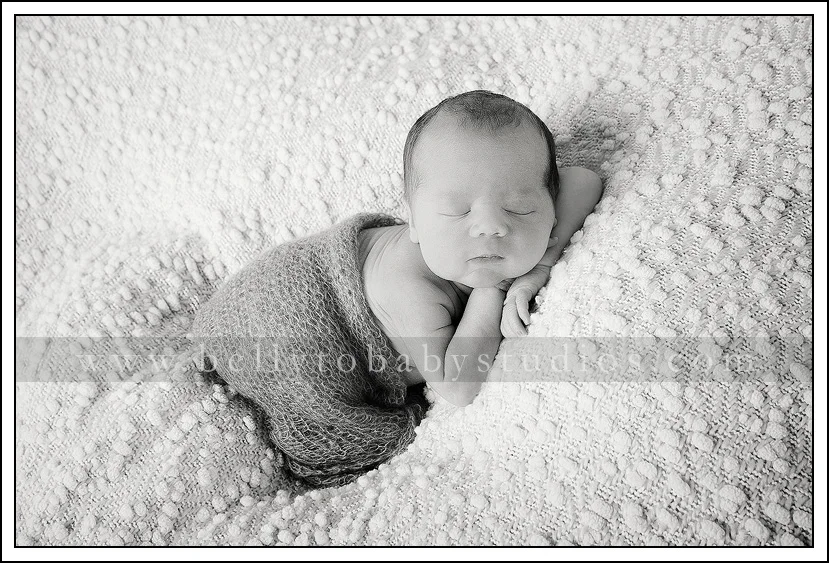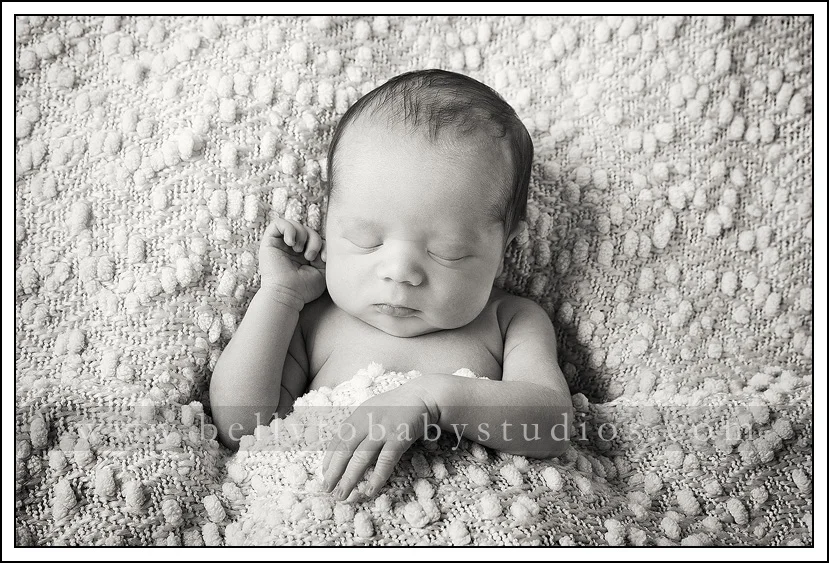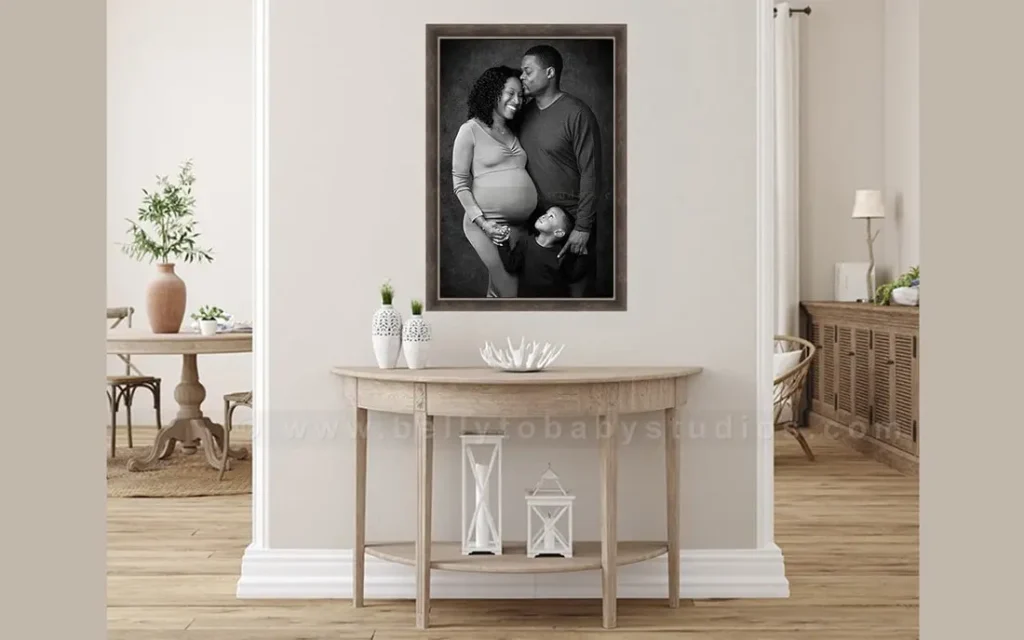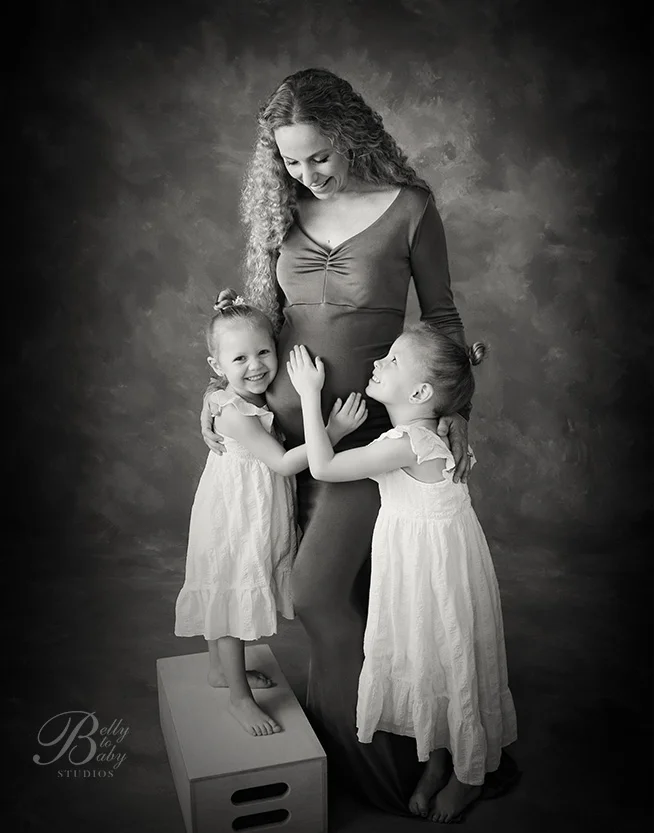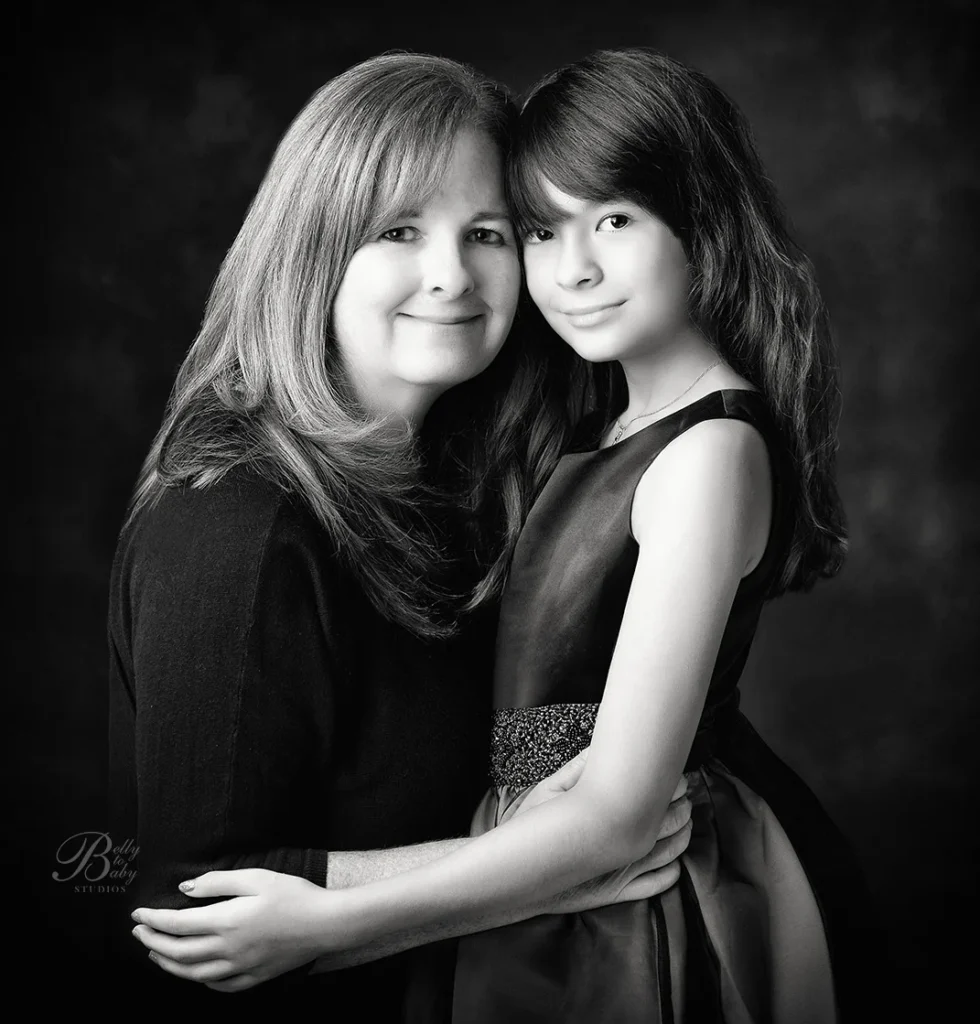How to Properly Store Unframed Photos and Portraits: Tips for Preserving Family Memories
Houston newborn and maternity photographer, Lisa Carr at Belly to Baby Studios, shares her personal tips on “How To Properly Store Unframed Photos And Portraits” keeping family portraits safe for generations.
As a professional newborn photographer, I’ve spent years capturing moments meant to last generations. But recently, I had a deeply personal reminder of why proper photo preservation matters. While helping clean out my parents’ home, I found myself surrounded by a lifetime of portraits—images of relatives, milestones, and memories that shaped our family. I wanted to keep them all. But like many of us, I don’t have the wall or tabletop space to display every cherished photo. That left me with an important question:
How can I safely preserve these irreplaceable images without displaying them all?
Here’s what I’ve learned and what I recommend for anyone who wants to store unframed portraits and photographs the right way.
Step 1: Remove Photos from Frames Carefully
If your images are in old frames, gently remove them, especially if the frames aren’t archival or the glass is damaged. Old frames can trap moisture, dust, and acids that harm prints over time.
This also applies to albums where photos are glued to pages. Carefully separate the prints and discard any deteriorating pages.
Step 2: Protect Each Photo with Archival Sleeves
Place each photo in a clear, acid-free archival sleeve to prevent fingerprints, scratches, and chemical damage. These sleeves shield your prints from light, dust, and air.
Sleeves come in many sizes, so choose the right fit for your photos, and always check they are labeled “acid-free” and “archival.”
Here is a link to ones I personally use and love: Clear Resealable Sleeves for 8×10 Photos – Acid-Free, Archival Quality
There are many other methods to store these loose prints. The important keywords are acid-free and archival.
Step 3: Store in Acid-Free Archival Boxes
Once protected, keep your prints in archival-quality boxes that block light and moisture. Label each box clearly—by year, event, or family member—to make finding photos later easy.
Archival boxes are ideal for:
Negatives and small albums
Family portraits
Studio prints
Loose photographs
Here is a link to the boxes I have purchased before: Museum-Quality Archival Photo Storage Box – Acid-Free with Removable Lid
Label each box clearly so you can access it easily later. I recommend labeling either by year or by family member name, whichever makes it easy for you to locate these images later.
Step 4: Use Archival Photo Albums (Optional)
For a more organized, browsable solution, place photos into archival albums with acid-free pages and sleeves. Grouping images by event, decade, or family branch works well for family history or genealogy projects.
Step 5: Scan for Digital Preservation & Sharing
Scanning prints creates a digital backup in case originals are lost or damaged. Digital copies also let you:
- Share photos instantly with relatives
- Display images digitally in frames or online albums
- Make reprints or photo books
Even a simple flatbed scanner works for most prints. For faded or damaged photos, professional restoration or editing software can help.
This is the scanner I personally use: https://amzn.to/3IsJ4S8
I love this Epson scanner because of the speed and the scan quality. It can scan documents, prints, negatives of various sizes, as well as slides. Look at what you plan to scan, and purchase your scanner based on what you intend to scan, as well as other key specs.
For more advanced photo restoration, consider hiring a professional or using photo editing tools to enhance faded or damaged prints.
Why Proper Photo Storage Matters
Photos are more than just images—they carry stories, emotions, and connections across generations. Taking the time to store them with archival materials preserves your family’s legacy for decades to come.
At Belly to Baby Studios, we love helping families create and protect these memories, from newborn portraits to family milestones.
Have Questions or Storage Tips of Your Own?
I would love to hear from you if you have any tips or questions about “How To Properly Store Unframed Photos And Portraits”. You can contact me here:
I have been a professional portrait photographer in Houston, Texas, for over 30 years. My studio is located in an office building close to the Galleria and in the Tanglewood neighborhood. Here is a map to the studio:
I look forward to helping you and your family with your Portraits.

